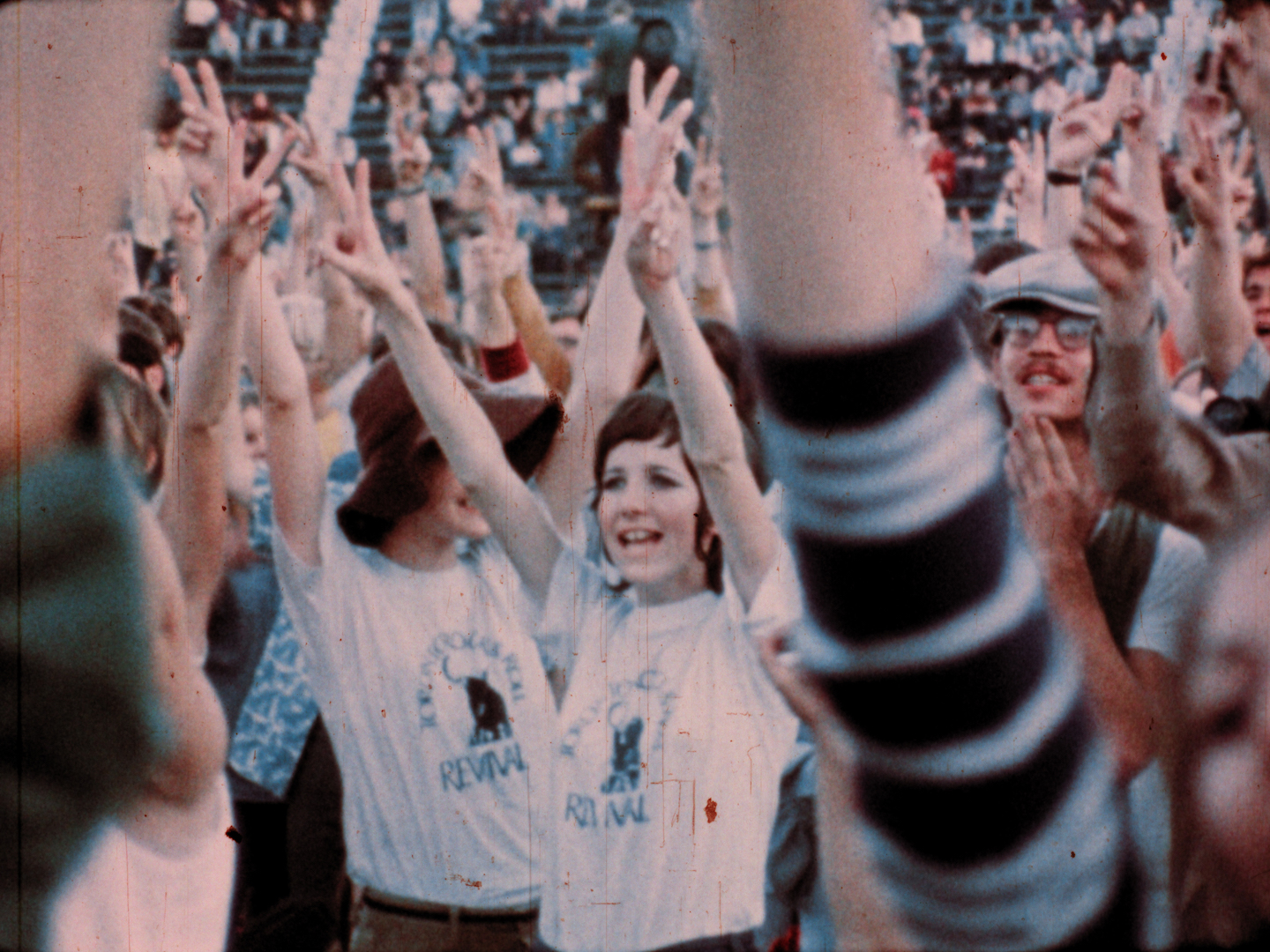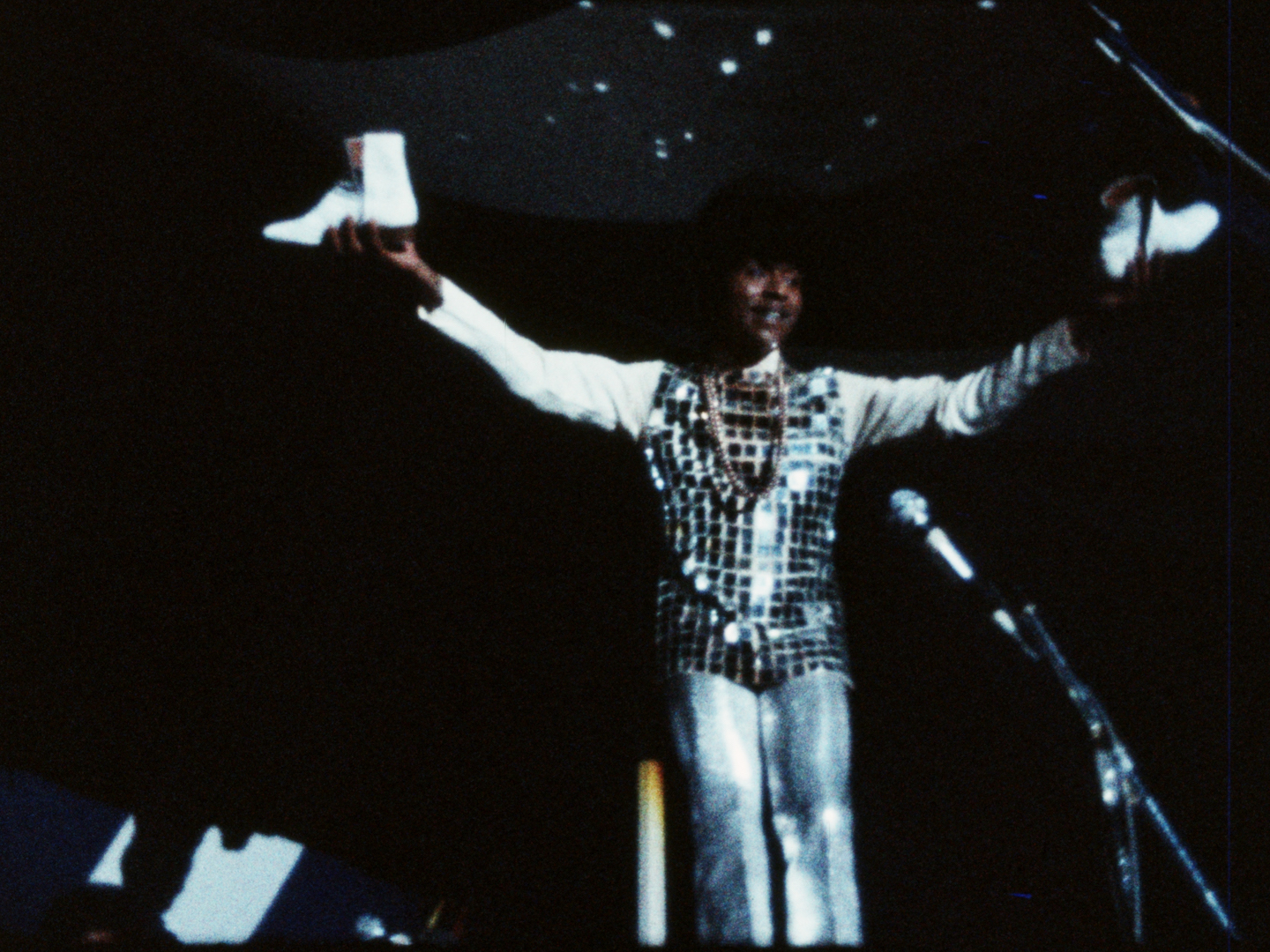In 1969, there were three music festivals that changed the trajectory of the world’s music scene. On September 13, one month after Woodstock, a couple of months before Altamont “The Toronto Rock ’n’ Revival” concert brought together some of the greatest and well-known names in the history of music: Chuck Berry, Little Richard, Jerry Lee Lewis, Bo Diddley, Gene Vincent and headlining the event was the Doors, who’s lead singer Jim Morrison only a few weeks prior spent a night in a Florida jail cell for exposing himself on stage.
RON CHAPMAN
Recently director Ron Chapman completed the documentary, “Revival69: The Concert That Rocked the World” which is a remarkable behind-the-scenes look at how this virtually unknown event changed the trajectory of music history forever. Somehow with odds heavily stacked against him, a young concert promoter named John Brower assembled one of the most insane rock events ever to be witnessed. The one-day event was later coined in rock mythology the second most important event in the history of rock music, which almost didn’t happen.
Through exclusive conversations with iconic musicians like Alice Cooper, Robbie Kreiger (The Doors), Alan White (Yes), Geddy Lee (Rush), Danny Seraphine (Chicago) and Klaus Voorman (Manfred Mann, The Beatles), and over 60 minutes of incredible archival footage and audio tapes, the documentary immerses the viewer in the craziness leading up to the festival which included a biker gang, numerous threats of cancellation, a mid-flight band rehearsal and the unparalleled luck that culminated in John Lennon shedding the mantle of the Beatles and nervously taking the stage with Yoko Ono, Eric Clapton, Klaus Voormann and Alan White creating an unforgettable happening that triggered Lennon’s decision to the leave the Beatles forever.
WEEKS BEFORE THE CONCERT
Rewind. It’s a few weeks before the concert….With almost non-existent ticket sales for the Revival, the show was almost cancelled until Brower had an apohnia. He decided to reach out to John Lennon. It was a long shot but Brower had no other choice if he wanted tickets to sell. In a last-minute plea, he reached out to Lennon’s people. The Beatle accepted the offer.
LONDON, ENGLAND
Anthony Fawcett, who worked for Lennon and Ono’s Bag Productions, recounted being the middle man between Lennon and Brower. As luck would have it, Ritchie Yorke, a critic for The Globe & Mail, was in the Apple office in London for an interview with George Harrison when Brower called and asked Fawcett if Lennon was available to perform. While Brower waited with bated breath for an answer Yorke encouraged Lennon to perform in Toronto. Lennon would ultimately agree.
Lennon reportedly was nervous about performing at the Toronto concert. Apparently the day of the event he tried to back out. Fans in Toronto didn’t believe he would appear, and it wasn’t until Lennon and Yoko Ono boarded a flight and were escorted to the stadium by the Vagabonds Motorcycle Club that all the tickets sold out. Eric Clampton, coming on board for the concert, sealed the deal for Lennon who’d started getting cold feet.
JET 707 & THE PLASTIC ONO BAND
When the Plastic Ono Band finally boarded the 707 jet for Toronto, Fawcett and Voormann remember how the group used their time to draw up the playlist and rehearse songs they’d never played together before as a group.
THE SHOW
One of the most electric performances caught on film was Little Richard. Making a dramatic entrance under a single spotlight wearing a shirt covered in tiny mirrors, Richard commanded the attention of his audience with his over-the-top stage show as he barrelled through his classics. Beautifully filmed by Academy Award®-nominated director D.A. Pennebaker (Don’t Look Back, Monterey Pop), this concert film not only captured the raw energy of Richard’s explosive performance but the adoration of a young crowd looking to cut loose with one of rock ‘n’ roll’s greats still in his prime.
Alice Cooper delivered an insane career-making performance which was completely unhinged. Claudja Barry, famous for her “Boogie Woogie Dancin’ Shoes” hit, shares with the viewers that she found Cooper “scary, like watching an axe murderer in a movie.” She recalls his gig like it were yesterday. After sending feathers from a pillow aloft from the stage, Cooper was handed a live chicken which he proceeded to throw into the audience. The next day a newspaper reported Cooper had bitten off the chicken’s head, cementing his reputation as a devil-worshipping rocker. Cooper has been laughing all the way to the bank ever since.
Some of the documentary’s funniest moments come with Chuck Berry’s duckwalking appearance and his backing by guitarist Hughie Leggat and drummer Danny Taylor, of the local band Nucleus. As the Toronto musicians explain, they were recruited to back Berry at the last minute and had zero rehearsal time. Taylor reminisces: “We had absolutely no clue what was going to happen from one song to the next—it was crazy.” Afterwards, Berry took his erstwhile backing musicians for burgers, across the street at a local Harvey’s.
Revival69 climaxes with Lennon and the Plastic Ono Band taking to the stage. Something remarkable happens at that moment, in keeping with the historic nature of the group’s first public performance, Sunset Strip Svengali and certified madman Kim Fowley, one of the concert’s MCs, asks the audience to flash their lighters, creating a sea of flickering stars in the dark and launching a concert-going phenomenon that continues today with cell phones.
As Lennon, Ono, Clapton, Voormann and White opened with “Blue Suede Shoes” and debuted new songs like “Cold Turkey” and “Give Peace a Chance,” Geddy Lee (Rush) recalls his reaction, “It was a kind of awe,” says Lee, “the light shining from John Lennon left you with your jaw-dropping. He was a Beatle and that had an aura about it, ”
Peter Goddard and Ritchie Yorke (mentioned above), two Canadian rock critics who both attended the Revival, each reflected on its significance years later. Goddard wrote that the Revival was “one of those remarkable moments in the history of a particular art form when many of the major players were together, met, talked and, in some cases, collaborated.” He added: “It was a real-time version of a time capsule.”
Yorke saw the Revival as a watershed moment for the world’s most famous musician. A week after the festival, Lennon told the Beatles he was done. The biggest band in the world was breaking up.
Forged with rare, recently discovered behind-the-scenes Super 8 verité footage, and including never-before-seen 16mm film of the concert shot by D.A. Pennebaker and his crew, REVIVAL69: The Concert That Rocked the World, is an exhilarating VIP ride into a pivotal moment in music history, told through the eyes of those who were there: the musicians, the mavericks behind the scenes, and all who witnessed history in the making.
Miraculously, Brower had pulled it off—much to his own disbelief. “Did the Rock ’n’ Roll Revival really happen?’ he asks at one point in the documentary, sounding as if the whole thing was a dream. “Was John Lennon really here last night?” It was so under the radar, almost a non-event, until all of a sudden it was the biggest thing in the world.”



